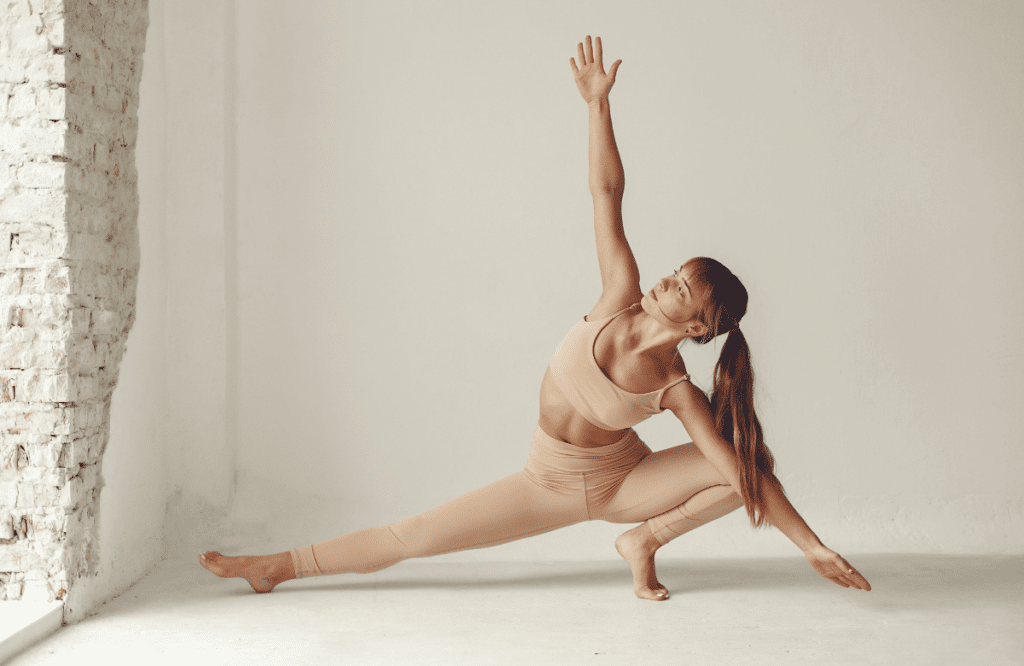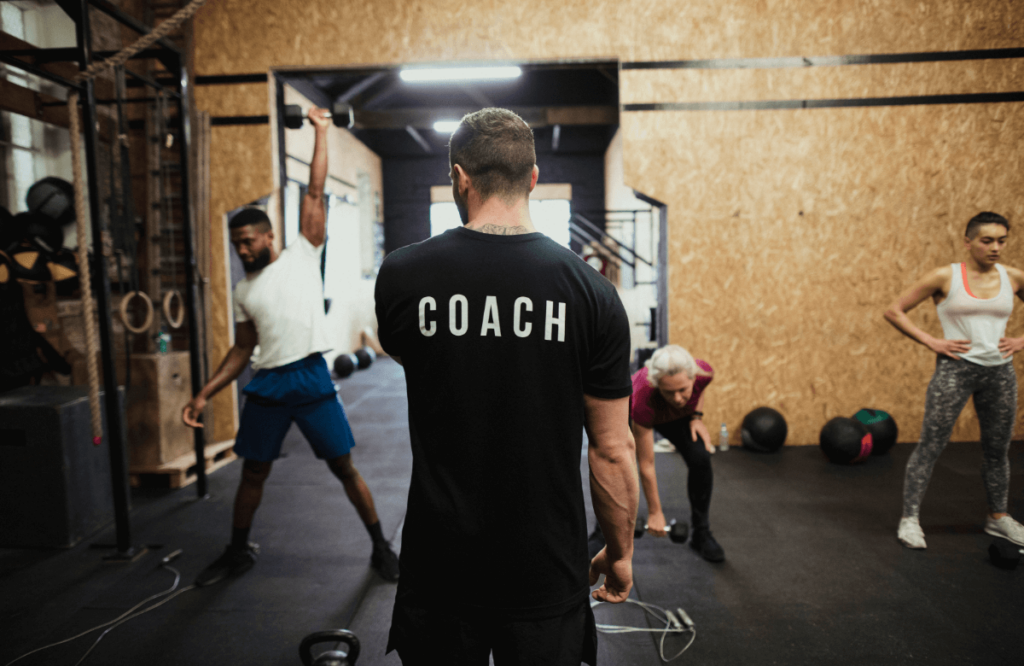Are Bro Splits the secret potion for monumental gains, or is it all just smoke and mirrors? The Bro Split is one of the most popular training methods in the fitness community because it targets one muscle group per session. That makes it easy to follow which is key for busy individuals, plus it will give you a pump everytime you go to the gym.
In this article we’ll cover the ultimate guide to Bro Splits: what are they, benefits, and a Bro Split workout template you can follow today! Here’s the outline:
- What is a Bro Split?
- Bro Split Workout Template
- Bro Split Training Methods
- Benefits
- Cons
After you’re done you’ll be ready to take your gains to the next level. Buckle up!
Jump to:
What Is a Bro Split?
A Bro split is one of many ways to organize your lifting sessions. The Bro Split targets one muscle group per session 5-6 days a week. For example, you’d work on your chest muscles on day one. On day two, on your legs, day 3 is shoulders, and so on.
The Bro Split can be efficient for some people who want to minimize their time at the gym and focus on specific parts of their bodies for aesthetic reasons. This is common among bodybuilders that need attention to detail on particular muscle groups.
Although there are better options for beginners, as you’ll learn, it offers some benefits on recovery and the simplicity of it.
Bro Split Workout Template
The main goal of the Bro Split is to focus on one muscle group for each session. On the following template, you’ll find a guide to help you organize your training schedule with the Bro Split.
This template goes from the most prominent muscle groups to the smallest. The training intensity will decrease as the week progresses. You’ll start strong, but you should be working the less taxing muscles by Friday.
Day 1: Leg Day
Starting your week with a leg day, it’s a statement. You will have the weights for yourself and write off a major muscle early in the week, which will make everything else easy after that. Plus, you want to avoid the bad reputation of skipping legs, don’t you?
Here’s a training sample for a leg day; we’ll go from compound exercises to isolation exercises:
- A1) Back Squats
- A2) Machine Leg Extension
- A3) Machine Leg Press
3-4 sets per exercise. 10-12 repetitions of each, and 2-to-3 minutes rest in between sets.
- B1) Front Squats
- B2) DB Goblet Squats
- B3) DB Walking Lunges
2-3 sets per muscle group. 8-10 repetitions per exercise with 90 seconds of rest between sets.
- C1) Bulgarian Split Squat
- C2) Poliquin Step-Up
- C3) Wall Sit (30-60 seconds)
2-3 sets per muscle group. 8-10 repetitions per exercise with 90 seconds of rest between sets.
You can perform these workouts with a challenging weight or whatever load fits your current individual goals. Pay attention to the technique and have a training partner or a spotter for the back and front squats.
Day 2: Chest Day
Chest Day is so big that Mondays have been declared as International Chest Day around the fitness world. This muscle group is one of the people’s favorites, and with reason. It adds to your aesthetics and strength gains.
The following chest workout routine will help you target the three portions of your pectorals and build all-around muscle mass. Before going at it, warm up your lats and shoulders first. That will minimize injury risk and improve performance.
- A1) Barbell Bench Press
- A2) Dumbbell Bench Press
- A3) Decline Dumbbell Press
3-4 sets per exercise. 10-12 repetitions of each, and 2-to-3 minutes rest in between sets.
- B1) Barbell Incline Bench Press
- B2) Dumbbell Incline Press
- B3) Decline Dumbbell Butterflies

2-3 sets per muscle group. 8-10 repetitions per exercise with 90 seconds of rest between sets.
- C1) Cable Machine Crossover
- C2) Chest Dips
- C3) Push Ups
2-3 sets per muscle group. 8-10 repetitions per exercise with 90 seconds of rest between sets.
Day 3: Back Day
Your back is the foundation for your upper body muscle gains and health. Strong back muscles aid in stabilizing your shoulder joint, which drives performance for shoulder and pectoral workouts.
These thick, fan-shaped muscle fibers cross the middle of the back and extend to the front of the arm bone (humerus). Follow this back workout template and experience massive back gains!
- A1) Pull-Ups
- A2) Lat-Pulldown
- A3) Straight Arm Pulldown
3-4 sets per exercise. 10-12 repetitions of each, and 2-to-3 minutes rest between sets.
- B1) Barbell Bent Over Row
- B2) Dumbbell Row
- B3) Chest Supported Dumbbell Row
2-3 sets per muscle group. 8-10 repetitions per exercise with 90 seconds of rest between sets.
- C1) Jumping Pull-Ups
- C2) Inverted Row
- C3) TRX-Row
2-3 sets per muscle group. 8-10 repetitions per exercise with 90 seconds of rest between sets.
If you want to add more variation to this back day, grab some ideas from here, or here. Keep it fun and exciting!
Day 4: Shoulders Day
Shoulders Day is one of those special training sessions because we all know how special shoulders are for the entire upper body. It’s worth noticing that most muscle imbalances and sports injuries come from the shoulder joint.
Get ready to attack this muscle the right way!
- A1) Barbell Press
- A2) Dumbbell Shoulder Press
- A3) Chest Supported Dumbbell Reverse Butterflies
3-4 sets per exercise. 10-12 repetitions of each, and 2-to-3 minutes rest between sets.
- B1) Arnold Press
- B2) Dumbbell Lateral Raises
- B3) Dumbbell Frontal Raises
2-3 sets per muscle group. 8-10 repetitions per exercise with 90 seconds of rest between sets.
- C1) Cable Lateral Raises
- C2) Cable Reverse Butterflies
- C3) Floor Prone Y’s
2-3 sets per muscle group. 8-10 repetitions per exercise with 90 seconds of rest between sets.
Day 5: Arms Day
There’s no Bro Split without Arms Day. This single muscle is present in every workout plan and fitness goal for almost everyone. Advanced and intermediate lifters will have a kick at it, but beginners should be weary at first because the soreness is real.
Check it out!
- A1) Barbell Biceps Curl
- A2) Alternating Dumbbell Biceps Curl
- A3) Rope Bicep Curl
3-4 sets per exercise. 10-12 repetitions of each, and 2-to-3 minutes rest between sets.
- B1) Chest Supported Dumbbell Biceps Curl
- B2) Dumbbell Hammer Curl
- B3) Inclined Bench Alternating Dumbbell Curl
2-3 sets per muscle group. 8-10 repetitions per exercise with 90 seconds of rest between sets.
- C1) Dumbbell Triceps Extension
- C2) Rope Triceps Pushdown
- C3) Diamond Push-Ups
3-4 sets per exercise. 10-12 repetitions of each, and 2-to-3 minutes rest between sets.
- D1) Overhead Dumbbell Triceps Extension
- D2) Dips
- D3) Standing Cable Crossover Tricep Extension
2-3 sets per muscle group. 8-10 repetitions per exercise with 90 seconds of rest between sets.
Feel free to toy around with these entire workouts, but remember progressive overload. Start light, and progressively increase the load until your body adapts.

Bro Split Training Methods
Different training splits prioritize different outcomes and use various training methods. The Bro Split is known for including supersets, drop sets, and a ton of failure training. Let’s break each of them down.
Supersets
According to the National Strength & Conditioning Association, a superset refers to back-to-back exercises of opposing muscles with little to no rest in between. For example:
- A1) Push-Ups (chest muscles)
- A2) Pull-Ups (back muscles)
Or;
- B1) Leg Extension (quadriceps)
- B2) Leg Curl (hamstrings)
This style effectively adds training volume to major muscles while keeping fatigue at bay.
Drop Sets
Drop sets are a terrific and popular method to train hypertrophy while being efficient with time. According to Sødal et al., a drop set is performed by taking sets to concentric muscle failure at a given load, then making a drop by reducing the load and immediately taking the next set to concentric or voluntary muscle failure.
Let’s take the barbell bench press, for example. A drop set would like:
- 135 lbs on the bar: Perform the exercise until you hit muscle failure.
- 95 lbs on the bar: Perform the exercise until you hit muscle failure.
- 65 lbs on the bar: Perform the exercise until you hit muscle failure.
- Empty bar: Perform the exercise until you hit muscle failure.
This can be applied to any exercise or compound movement, and it’s recommended you leave it for the end of your training session due to the muscle damage and high fatigue you’ll likely accumulate.
Failure Training
According to Schoenfeld, et al. training to failure can be defined as the point where the target muscle is incapable of completing another complete repetition without assistance.
For example, let’s say you’re doing push-ups and made it to the point where you cannot go all the way up to complete the rep without assistance; you just hit muscle failure.
Although research suggests that training for failure is essential to induce muscle hypertrophy, it is not necessary or even a prerequisite. If you can include it in your training program a few days per week, then more power to you!
Benefits Of The Bro Split
There is a reason why the Bro Split is one of the most popular splits among fitness enthusiasts. The benefits are many, and we are about to uncover them.
Good For Recovery
After nutrition, quality recovery time is the most critical variable for inducing muscle growth. The less time for recovery you have, the fewer opportunities your body has to adapt and grow.
The Bro Split allows for a solid recovery time since you’d be training a muscle group once a week. If you worked out your legs on Monday, the next time you’re training legs is the following Monday.
Although your muscles can recover after 24-48 hours (1-2 rest days), it’s essential to differentiate that even if you’re not physically tired, your CNS (central nervous system) might be. For that reason, giving your muscles an entire week of rest doesn’t sound bad at all.
Here are five tips to help you with recovery and enhance your results post-workout. Give them a go!

Simple To Organize And Understand
There is no more straightforward split to remember and understand than the Bro Split. Your training week usually looks the same, and you are more than likely training each muscle group 1-2 times per week.
The simplest way to organize the split is assigning a muscle group to your 5-day training week, and voilá, your Bro Split is ready. That is one of the benefits many people find in this split—especially those individuals with little time and chaotic agendas.
They Are Effective
The most effective method is the one that allows for consistent training, and that the Bro Split does. With enough time to recover and an easy structure to follow, this split method will take you where you want to go regarding hypertrophy.
If you can stick to the program, you’ll soon notice how effective the Bro Split is.
Time Efficient
Another benefit of the Bro Split is that it saves you time. Knowing that all of your effort will be poured into one major muscle helps you be efficient going through the workouts.
Busy professionals will see this value, especially when you know it’s possible to hit a great and effective workout within 45 minutes or less if you focus on supersets and drop sets.
Cons Of The Bro Split
Although the Bro Split’s benefits are self-evident, some downsides might turn some people off—especially those who are more experienced or even a few beginners.
Little Frequency
The latest research on training frequency shows that working the same muscle group 2-3 days per week is more effective at building muscle than just once a week. Given that the Bro Split only targets the same muscle once, it’s evident why many look for an alternative.
It’s not that training legs once a week won’t grow your muscles; it’s just that the scientific evidence suggests that it is not the most optimal frequency.
Too Much Focus On Isolation
Training your muscles in isolation is okay; it’s advantageous for some people. However, revolving your entire training program around isolating workouts could hinder your muscle growth and probably even increase injury risk.
Isolating your training program is crucial for aesthetics and some rehab workouts, but it shouldn’t take the most significant slice out of your training pie for most people. Some joints, like the elbow and knee, don’t do too well in constant isolation, so make sure to mix it up!
Poor Strength Growth
If your main goal is building strength, then better choices than the Bro Split might exist. You must expose your muscles to a higher training frequency (see above) and reduce recovery time between muscle training groups to improve strength development.
Full-body workouts are more effective at building strength than the Bro Split method.
Hard On Beginners
The most challenging element for beginners is dealing with after-soreness, also known as DOMS (delayed onset muscle soreness). This physical sensation of pure muscle pain can show up 24-72 hours after the training session, and honestly, it’s tough.

Imagine someone who has never lifted weights suddenly spending 45-60 minutes in the gym hitting leg day. Chances are that someone will not walk to the next week or so. That is why the Bro Split is so hard on beginners.
FAQs
Is A Bro Split Effective?
Yes, the Bro Split can be effective for some people looking to get the most out of their training session when running short on time. It’s also a terrific choice to isolate specific muscle groups and improve recovery.
Can Beginners Do Bro Splits?
Although they can, they shouldn’t. Bro Splits focuses on isolation and more volume per muscle group in a single session; this could be detrimental for beginners since their bodies may need to be used to handling such load. Beginners are better off doing full-body splits for the first 4-8 weeks until their muscles adapt to the new load.
Will I Gain Muscle On Bro Split?
Yes, you will gain muscle on Bro Split. Although it may not be the most muscle, your body can gain since you’re working one muscle group per session, which has yet to be shown to induce more muscle growth than training several muscle groups at once.














